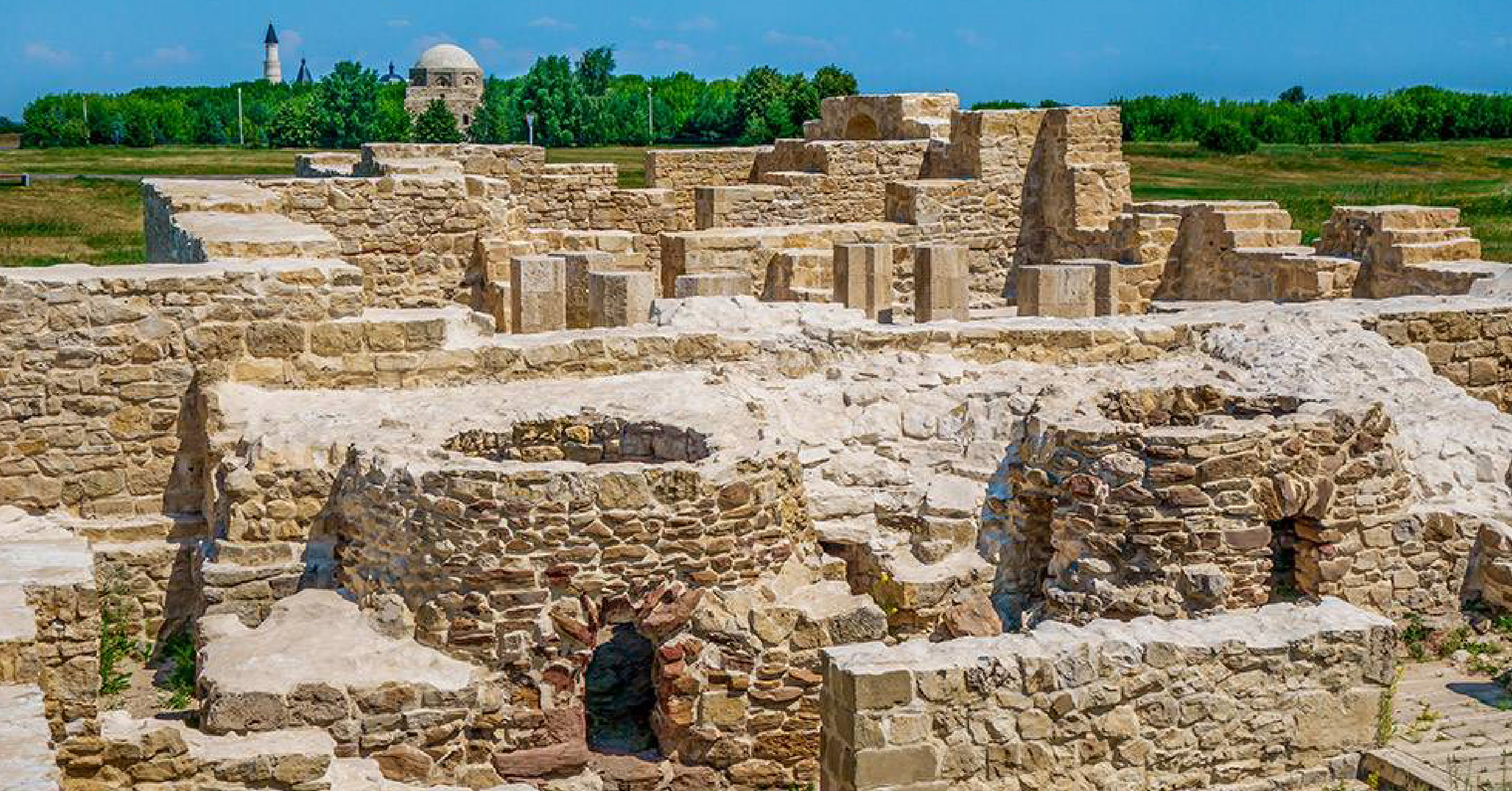2026
2026
2025-07-15

The photo: the ruins of the white palace of Bolgar, 14th century
Armenians established themselves in Bolgar and other parts of Volga Bulgaria from the medieval period, particularly from the 10th–11th centuries. Although the majority of the population in Great Bolgar was predominantly Muslim, archaeological evidence confirms the presence of an Armenian trace, a community, and a Christian cemetery.
To study the ethnogenesis of the peoples currently living in the Volga region, scientists from the Sirius University of Science and Technology of the Russian Federation, in collaboration with the Vavilov Institute of General Genetics of the Russian Academy of Sciences and the Research Institute of Anthropology at Moscow State University, conducted a new round of research. Ultimately, are the Tatars, Chuvash, and Bashkirs descendants of the medieval inhabitants of Bolgar, with the blood of nomads and southern migrants flowing through their veins?
Bolgar, a major trade and cultural center situated on the shore of the Volga River, was established by nomadic tribes who had migrated from the south—namely, the Azov and Black Sea regions. In the 10th century, they founded a state there and adopted Islam. In the 13th century, the Mongols captured Bolgar and made it the capital of their state, the Golden Horde. According to archaeologists, Bolgar had a multiethnic population, including Turks, Finno-Ugrians, and Armenians. Only through genetic research was it possible to determine precisely the geographic origins of some of these groups.
For the first time, scientists have decoded the DNA of individuals who lived in the ancient city of Bolgar, the former capital of Volga Bulgaria and later the Golden Horde, in order to obtain precise data. The genetic findings fully correspond with historical and archaeological evidence.
According to the research findings, the city’s population was diverse. To understand who lived in the city 700 years ago, scientists studied the DNA of three individuals buried near the “Greek Palace.” According to the researchers, the “Greek Palace,” a small Christian chapel, is most likely of Armenian origin. Geneticists analyzed the haplogroups of these individuals—a kind of hereditary genetic “surname” passed down through generations. Haplogroups are used to trace a person’s ancestral origins. In men, they are determined by the Y chromosome (inherited from father to son), and in women, by mitochondrial DNA (inherited only from the mother).
The genomic analysis of two men confirms their Armenian origin, indicating movement from the Caucasus or Anatolia. This means their ancestors came from the south, likely as merchants or craftsmen. Based on the analysis, a genetic link was identified between the buried woman and modern Tatars and Bashkirs of the Volga-Ural region.
As early as the 18th century, when Peter I visited the ruins of the Armenian church, he ordered specialists to collect the Armenian tombstones and decipher their inscriptions. The tombstones are dated to the years 1321 and 1335. Later, these texts were published in Russian translation. The discovered tombstones depicted not only Armenian merchants but also soldiers.
Archaeological excavations at the “Greek Palace” were conducted twice—first in 1916 by V.F. Smolin, and later in the mid-1940s by A.P. Smirnov. The structural and dimensional characteristics of the chapel, along with the tombstones bearing Armenian inscriptions, allowed researchers to associate it with 14th-century Armenian churches in Noravank, Theodosia, and Old Crimea. Churches of this type are typically two-storied, with the lower floor serving as a burial chamber. The deciphered and repeatedly published epitaphs are dated between 1308 and 1335. This led A.P. Smirnov to convincingly argue that the site in Bolgar is a burial ground of an Armenian colony, which had formed around the memorial complex.
During excavations of the ruins of the “Greek Palace” church and the southern and southeastern sections of the surrounding area, archaeologists discovered and studied 113 Christian burials. Artifacts found in some of the graves indicated a high material standard of living among the inhabitants. Silk textiles uncovered at the site were embroidered with silk, gold, or gilded silver threads and decorated with plant motifs, stylized Arabic script, and figures of animals and dancing people. These textiles closely resemble the work of Armenian artisans from medieval Ani. The reconstruction of skulls from this cemetery revealed characteristics of the Armenoid type among the buried individuals. One of them was identified as a Chinese woman. It appears that many Christians living in Bolgar found their final resting place in the cemetery of the Armenian colony.
It is known that Armenians had trade relations with the Volga region countries as early as the 8th–9th centuries. From the East, they brought goods such as silk, textiles, carpets, spices, and other merchandise, and primarily exported furs. The 10th-century Arab traveler Ibn Fadlan, in his Mission to the Volga, wrote that the tent of the Bulgar king was entirely covered with Armenian carpets. [1]
Armenian communities existed in the cities of Itil, Bolgar, and Kazan from as early as the 8th century. Starting in the mid-11th century, following the Seljuk invasions, a new wave of emigration from Armenia began. Armenians mainly settled in the cities of Astrakhan, Aghsara (Sarai), and Kazan. According to records, two of the streets in Kazan were named “Armenian Near” and “Armenian Far.” [2]
After the Mongol conquest of Ani, the capital of Armenia, in 1236, approximately 40,000 Armenians—primarily craftsmen and merchants—migrated to these regions.[3]
The results of the aforementioned genetic and archaeological research once again confirm the Armenian presence in the Volga basin, particularly in Bolgar, as well as the significant influence of Armenian architecture and the important role Armenians played in both the economic and cultural life of the area.
[1] Abrahamyan, A. G. A Brief Outline of the History of Armenian Settlements, Vol. I. Yerevan, 1964, p. 122.
[2] Ibid. p. 123.
[3] Alpoyadjian, A. History of Armenian Emigration: The Dispersion of Armenians to Various Parts of the World, Vol. II. Cairo, 1955, p. 350.